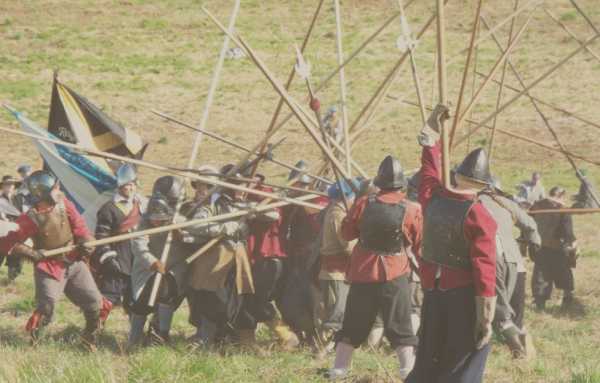Dunbar 1650 Commemorations: September 13th/ 15th 2019
Relatives of Scots soldiers who were captured and shipped to the American colonies as indentured servants in the 17th century will travel to Scotland to gather and commemorate their ancestors: September 13th/ 15th
Around 1,400 men were sent overseas after losing in battle with Oliver Cromwell's troops at the Battle of Dunbar in 1650, mostly to North American colonies and the Caribbean. They had by then survived capture and imprisonment at Durham Cathedral where and estimated 1,700 soldiers died of malnutrition, disease.
Around 30 relatives of those who survived the battle and its aftermath will gather in East Lothian next month for a commemorative event organised by Scottish Battlefields Trust [SBT]. Most will travel from the United States for the occasion.
Dr Arran Johnston, director of SBT, said: "The majority of those were sent to North America or to the Caribbean and some of them were sent to fight as mercenaries in Ireland and Europe.
"Quite a lot of the prisoners who who given seven years servitude on the other side of the world went on and became successful, had families and created legacies. Their descendants who are due back in Scotland are really coming back to where their family story really began."
The Battle of Dunbar has been described as one of the most bloody and short battles of the 17th Century civil wars. In less than an hour the English Parliamentarian army, under the command of Oliver Cromwell, defeated the Scottish Covenanting army who supported the claims of Charles II to the Scottish throne.
By the time it was fought, there had been civil war in the British Isles for eleven long years, and the alliance between the English Parliamentarians and the Scottish Covenanters had broken down after the English executed King Charles I.
The Scots chose to crown Charles II, the old king’s son, prompting Oliver Cromwell to invade in retaliation. On 3 September 1650, Cromwell unexpectedly attacked the larger army of General David Leslie outside the small harbour town of Dunbar and destroyed it.

Most of those travelling for the event will come with the Scottish Prisoner of War Society, which has long researched those who sailed to America following the Battle of Dunbar.
They, along with the Scottish Battlefields Trust, will honour men such as James Adams, Archibald Archbell, John Bank, Alexander Bravender and George Darling, all who are known to have settled around Lynn, Massachusetts , after their period of indentured servitude came to an end.
Dr Johnson said: "The society have done tremendous work finding out what happened to these people after they arrived in North America. The big difficulty they have is connected to people back to Scotland. It is very difficult to pin down where they came from as the English Parliamentarians were just not interested in keeping records.”
"There was no effort at all to give information back to Scotland. If you were a wife or a mother and watched your loved one march off to Dunbar, you had no way of knowing if they had been killed or sent over to another country. There are references in Kirk of Session papers of women who are later wanted to know if they can get permission to remarry and start a new life. They really did not know if they were widowed or not."
What is known is that many of the surviving solders were sent to Saugus Iron Works, which is about 10 miles north east of Boston, Massachusetts. Dr Johnston said that surviving records of the ironworks, which closed around 1670, listed those who worked there as indentured servants.
He added: "They were taken over to work as miners or in saw mills and iron works. It was relatively intense labour but it was really important work in the development of these new colonies. You were given a contracted length of time and once you had finished that, and it was normally seven years, you were released and able to create a new life.
"If you imagine what it must have been like for these men who, were not quite from the same glen, but would have had little experience beyond their area of Scotland, to go out and experience battle in what was probably their first military encounter.
"They were then marched into England and endured these terrible condition. And then, if they survived, to then face the prospect of crossing the ocean and beginning a new life. It must have been extremely terrifying yet finally perhaps exhilarating."
A major research project into the lives of the soldiers has been carried out at Durham University after the remains from up to 29 skeletons were found in burial pits under the city's cathedral in 2013.
The face of one of the soldiers was reconstructed by specialists at John Moore University in Liverpool. Durham researchers established he was aged between 18 and 25 when he died. It was also determined he had suffered periods of poor nutrition during childhood and had lived in south west Scotland during the 1630s.
Dr Johnson will lead the commemoration for the soldiers next month during a weekend of events planned for the weekend Friday September 13 to Sunday September 15.
A re-enactement of a key part of the Battle of Dunbar will also be staged as well as a re-enactment parade by 17th century Scots soldiers who will march through the town as descendants of those original fighters watch on.
Published Date: August 5th 2019
|





